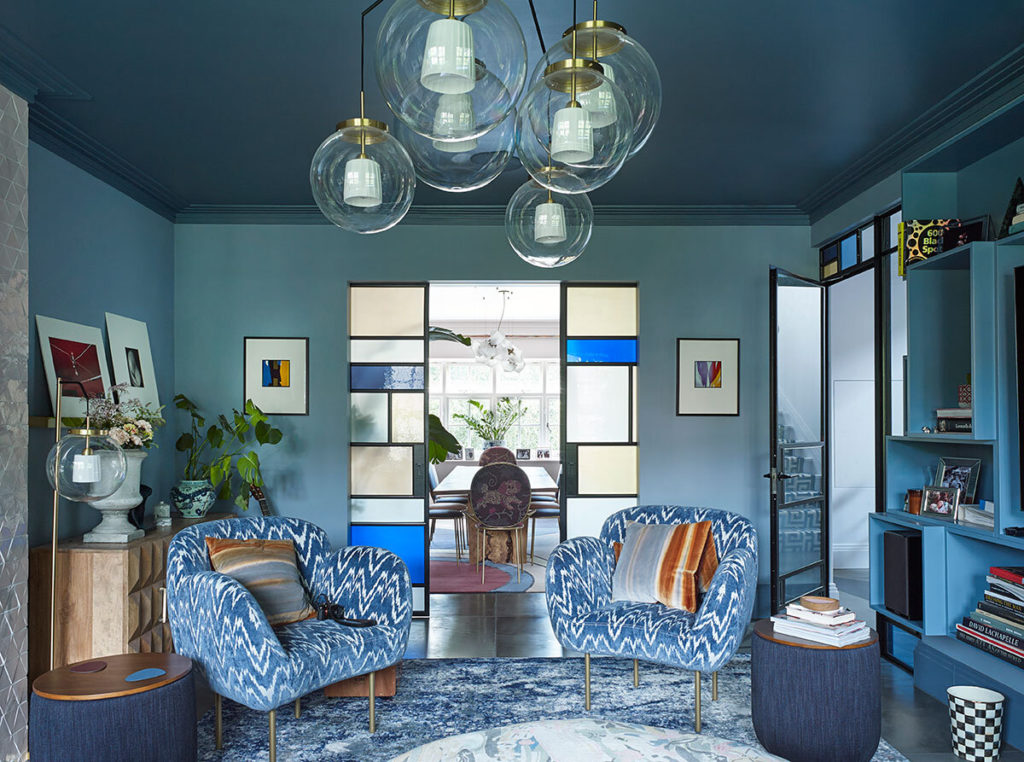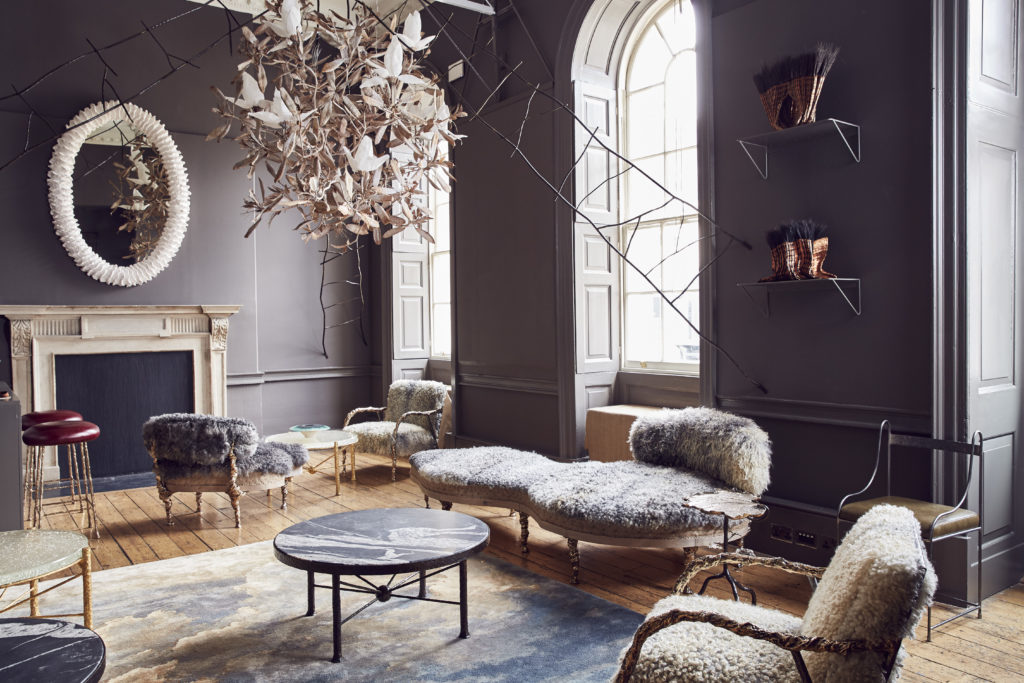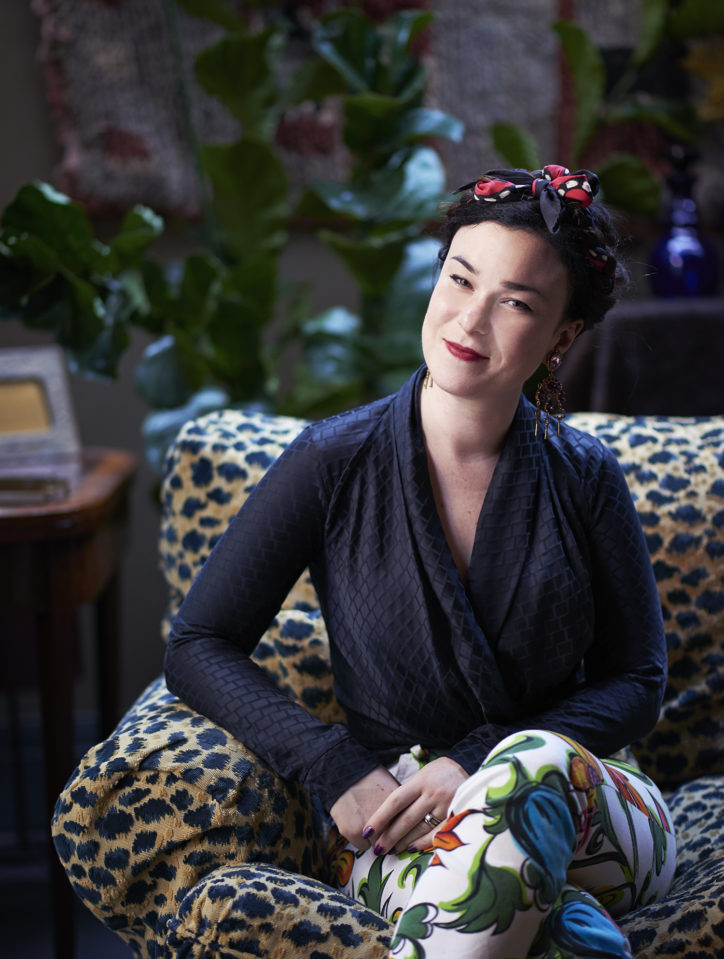For the British interior designer Rachel Chudley, the secret of a successful scheme is all in the mix. Known for her inspired use of luminous colour, she populates her projects with an eclectic yet considered combination of furniture, art and objects. And key to her approach is the timeless aesthetic that pervades every room, thanks to her judicious blend of contemporary design, bespoke elements and historic pieces.
“Vintage and antiques are really the heart and soul of any project,” she says. “We create so many of our own designs, but if a room is too heavy on things that have been made by us, it becomes a Rachel Chudley showroom, rather than somebody’s home. With older pieces, the special little one-off things that you find, you feel the history of those items. It doesn’t matter if the client owned them or we sourced them, they tell a story and give so much character to a project. It’s almost like a little bit of chaos, which is actually what you really need to make a home, rather than an interior-designed house.”

Historic revival
The spaces Chudley creates are beautiful yet liveable, partly because she handles the objects within them with respect, rather than reverence. A firm believer that a home should not be treated as a museum, she advocates taking a piece out of its own context, rather than surrounding it with other objects of the same style or period, in order to create an interesting and personal space.
“I try to learn as much as I can about the provenance of something and the period it was made in, in order then to take it out of that world and totally reappropriate it,” she says. “You have to know the rules in order to break them, but you have the freedom to do whatever you want with this item. You want to know its history, and be interested by it, and then you have to allow yourself to say, ‘This is for fun.’” As an example, in a recent project she used a vintage rug as a blind, without altering the rug, but simply by attaching a Swedish pulley system. “It’s woven from cactus silk, and the back is almost as beautiful as the front, so this way you get to see both the front and back of the rug working together,” she explains.
You have to know the rules in order to break them, but you have the freedom to do whatever you want – Rachel Chudley
She has sought out important historical pieces for clients, but she is also fond of hunting down the idiosyncratic objects that bring character and a story of their own, such as two enormous porcelain vases, twice her own height, that she found on a trip to Taroudant in Morocco and thought would be perfect for a project she was working on at the time: “Luckily, the clients agreed.”
Right now, she’s finding herself drawn to the drama and decorative impact of art nouveau and baroque pieces. “I feel like, as a style, it’s been really out of fashion for such a long time, and I love the curves; I love the nature-inspired part of it, but also the bonkers part of it,” she says.
Again, her approach is to take such romantic, expressive pieces out of their milieu, and juxtapose them within a contemporary, pared-back interior, pairing them with objects of other periods and bespoke pieces and wall colours, so that they are given new life, as well as adding a decorative edge to the aesthetic of the room.

Colour connection
Chudley’s own confidence in mixing – and occasionally repurposing – pieces comes partly from her training as an art historian. She studied at The Courtauld Institute of Art in London, then at the Interior Designers Institute in California, and initially had an art business before setting up her own interior-design studio six years ago, following stints working for Thurston Boyd in the US and Colefax & Fowler in the UK, among others.
It was during her time in California that she met her husband, Nico Kaufman, son of the renowned American artist and colourist Donald Kaufman, who has had a profound influence on her work. She now mixes bespoke paint colours for every project, using Kaufman’s original formulas and tweaking them to create original shades. “To put it into context, most paint companies, including the really top ones, will use around three pigment jars in any base to create a colour, whereas Don uses 10 to 15 pigment jars for each colour, which is what gives them their luminosity,” she explains. “It’s a lot of work, but it’s really fun.”

International influence
Although, thanks partly to her bold aesthetic, Chudley’s style was initially pigeon-holed by some as ‘English eccentric’, her connections with the US and her love of travel have, she believes, had a significant influence on her aesthetic.
“When I think about California style and New York style, I can’t pinpoint exactly how it’s affected me,” she says. “Going to these places and seeing how other people live – this other kind of world that’s similar but also so different from our country – it just opens my mind up every single time I go there, to the possibilities of what you can do.”
Among the challenges of the past year in lockdown for Chudley has been the difficulty of remote working: she is currently completing a project on 5th Avenue in New York that she has managed entirely remotely, after an initial site visit. But aside from the logistics, she is also missing the opportunity to visit other places, to root around in flea markets, meet artisans and makers, chance upon must-have pieces and soak up ideas. “I’m totally addicted to travelling, and I think it’s the best thing in the world for creativity,” she says. “Everybody that’s creating something is borrowing from something else, and so it’s important sometimes to go as far away as you can from your day-to-day experience, to input new visuals into your brain that go through the compost of your mind and come out as something else. I can’t wait to travel again.”
Effect Magazine is brought to you by Effetto



